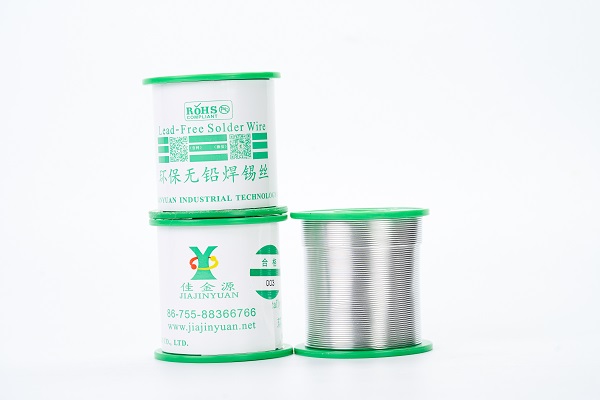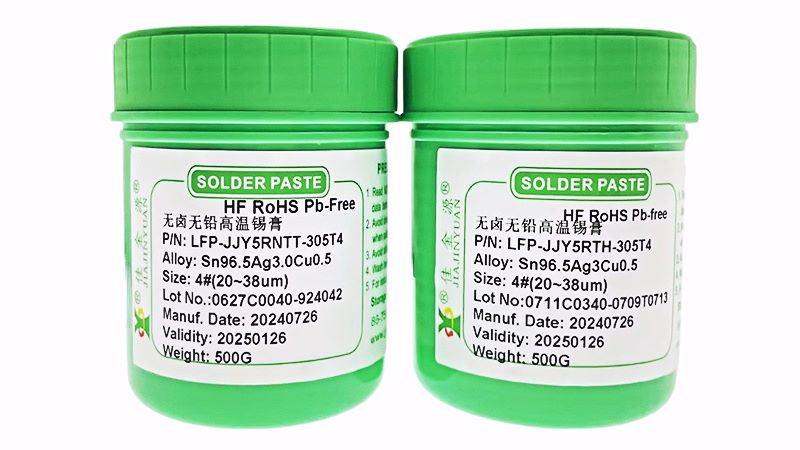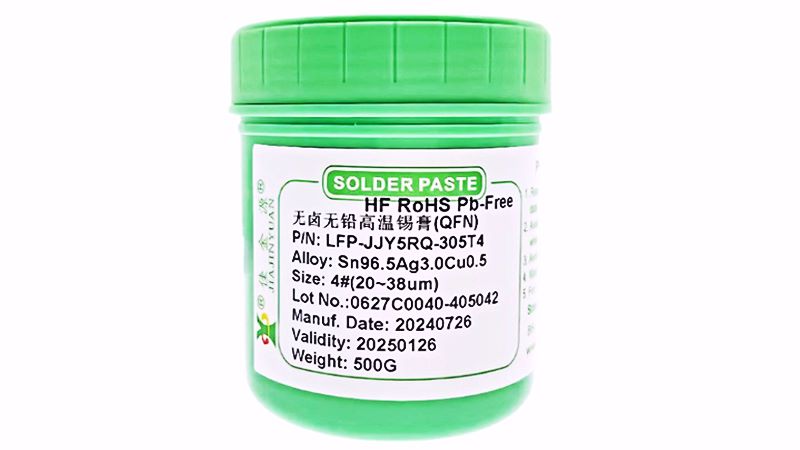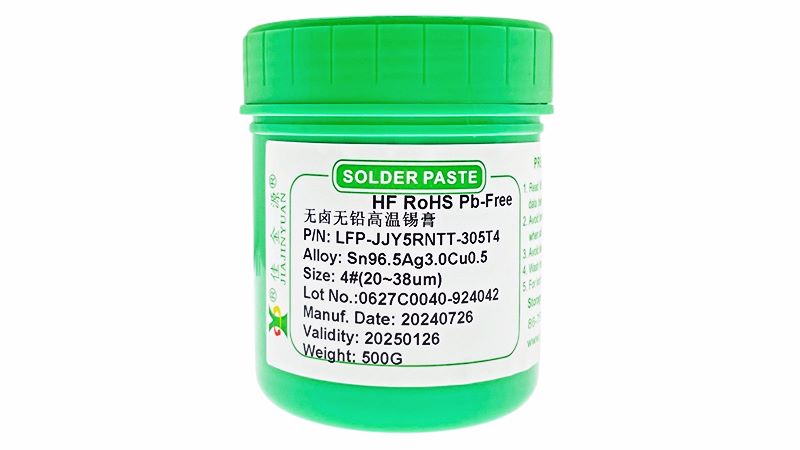Everyone is well aware that soldering materials are essential auxiliary materials in the electronics industry, and there are also many types of products. Many people ask, what is the difference between lead-free and lead-containing solder wires? Lead solder wires can also be classified into conventional environmentally friendly solder wires, nickel-plated environmentally friendly solder wires, stainless steel environmentally friendly solder wires, silver-containing environmentally friendly solder wires, etc. according to their different functions So where are the differences between them? Now, JJY Solder Paste Manufacturer will explain it to you:

Silver-containing solder is generally lead-free solder, and lead-containing solder contains very little silver. Silver-containing lead-free solder is one of the better types of lead-free solder. Due to the addition of silver, its wetting performance is much better than that of lead-free solder without silver. The reliability of the solder joints is also excellent. For audio equipment and headphones, using good solder will significantly improve the sound quality.
Lead-free solder wireThe differences from silver-containing solder:
1. Different melting points: Due to the differences in metal alloys, their melting points also vary. The melting point of lead-free solder wire containing silver is:217The melting point of lead-free solder wire is:227Degree. Difference10About a degree.
Second, different metal compositions: Silver-containing lead-free solder wire is composed of tin-silver-copper alloy, while lead-free solder wire is made up of tin and copper alloy and does not contain silver metal components.
Three, different costs: Due to the high price of silver metal, silver-containing lead-free solder wire is more expensive than lead-free solder wire. This is a major advantage of lead-free solder wire. The higher the silver content in silver-containing lead-free solder wire, the more expensive the cost.
Fourth, different comprehensive performance: Due to the effect of silver metal, silver-containing lead-free solder wire has better and stronger firmness than lead-free solder wire, and the solder joints are more secure. Secondly, electrical conductivity is also a very important indicator in solder joints. Silver is a metal with excellent electrical conductivity, so lead-free solder wire containing silver has better electrical conductivity, thermal conductivity, etc. than lead-free solder wire. These performances are all beyond the reach of lead-free solder wires.
Five. Different luster colors of solder joints: The luster of lead-free solder wire presents a certain degree of brightness, making it look more attractive. This is also one of the advantages of lead-free solder wire. However, the luster color of the solder joint does not represent the soldering performance of the solder joint itself. The luster color of the solder joints of silver-containing lead-free solder wires affects the brightness and color of the appearance of the solder joints. Since silver metal is a matte metal rather than a bright one, the solder joints of silver-containing lead-free solder wires do not have a bright luster and are matte.
Nowadays, society is developing at an increasingly rapid pace, and the production of electronic products is becoming more and more widespread. The specifications and various requirements of the products needed are relatively high, and a wide variety of products have emerged. Many people ask how to choose. If you need to purchase, you can consult the customer service staff, who will recommend high-quality, low-priced and cost-effective products for you. Welcome new and old customers to call for consultation and purchase!





 Tel:+86 0755 88366766
Tel:+86 0755 88366766 Phone:+86 18938660310
Phone:+86 18938660310 Email:sales@jjyhanxi.com
Email:sales@jjyhanxi.com Address:13/F,12/F, Building No. B,Qinghu Technology Park,Qingxiang Rd.,Qinghu Community, Longhua Subdistrict,Longhua District,Shenzhen City,GUANGDONG Province,P.R.C.(518027)
Address:13/F,12/F, Building No. B,Qinghu Technology Park,Qingxiang Rd.,Qinghu Community, Longhua Subdistrict,Longhua District,Shenzhen City,GUANGDONG Province,P.R.C.(518027) Guangdong Public Security Backup 44030902002666 name
Guangdong Public Security Backup 44030902002666 name
 WeChat
WeChat WeChat official account
WeChat official account
